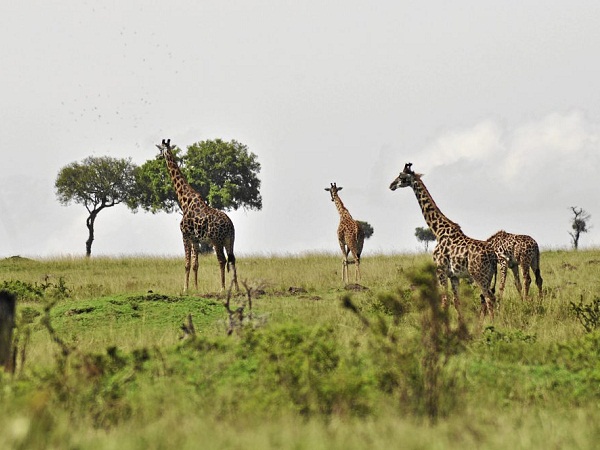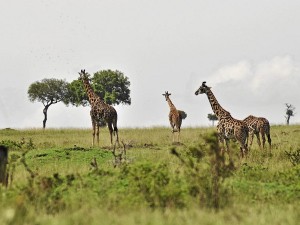
When fashion designer John Galliano first set foot on Elephant Pepper, an old-fashioned safari camp in the beating heart of the African bush, his jaw dropped and his face froze upon catching sight of his “suite” for the next four nights.
Canopied under a grove of pepper trees where vervet monkeys played and fought, and garrisoned by a row of Maasai warriors clad in shuka blankets, was a bare canvas tent with a backyard unlike any other: the game-rich grasslands of the Maasai Mara, Kenya’s most famous wildlife reserve.
Witnesses couldn’t confirm whether Galliano raised his sculpted eyebrows in delight or disbelief. But for most travelers on their first traditional safari, it’s usually a mix of both.
Limited mobile
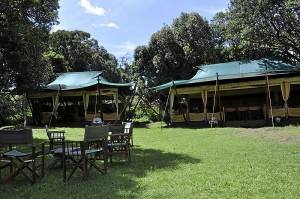
With limited mobile phone access, no generators (12 solar panels power the entire site, when needed), no permanent structures (mindful of its eco-footprint, the camp is completely mobile), and an unfenced location inhabited by all creatures wild and free, Elephant Pepper Camp (visit www.atoasafaris.com or call tel. 8122728) offers what most five-star African lodges cannot—an opportunity to experience Kenya in its age of innocence.
Kenya, the land of Karen Blixen’s “Out of Africa,” world-class Olympic athletes, and Barack Obama’s forefathers, is where the European pastime of game-viewing began in the 19th century. And the Maasai Mara, once the world’s most popular playground for hunters and for poachers, was its birthplace.
In those days, when well-heeled Westerners with a sense of adventure went on “safari” (the Swahili word for “journey”), it meant long, treacherous nights on horse-drawn caravans with a huge contingent of staff and crew ready to pitch a tent and prepare a campfire come nightfall.
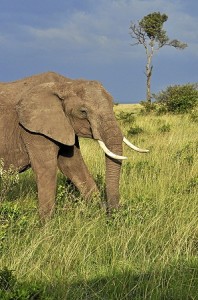
When I arrived at Elephant Pepper Camp during the waning days of Kenya’s blistering summer last March, I realized just how easy it was for writers like Hemingway or Huxley to wax romantic about those halcyon days of the hunt.
Deafening silence
Gone, of course, where the crackling sounds of rifles being fired in the air and the constant drumming of hoofbeats in the red dirt. As I sat under a ceiling of stars, enjoying my glass of Tusker beer over the campfire, there was only the deafening silence of the night, interrupted only by a contact call in the distance or the thunderous roar of lion.
The authentic charm of this 20-year-old mobile camp, a true “black hole resort” where you can completely disconnect from the modern world, is its accommodations.
Linked together by marked footpaths in the forest, each of the eight canvas tents consist of a main bedroom with a queen-sized bed, an en-suite bathroom (with a wash basin, bucket shower, and eco-friendly flush toilet), and a private veranda with a hammock perfect for noontime naps between game drives.
Safari highlight
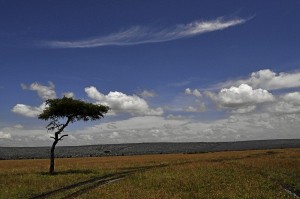
The morning and afternoon game drives on open-sided Land Rovers are the highlight of any safari in the Mara, a savannah so flat, leveled, and free of obstruction that it offers camera- and binocular-friendly views of the big cats, wildebeests, zebras, giraffes, gazelles, and spotted hyenas on parade.
I still recall the inimitable thrill I felt when I witnessed my first kill, which may seem like an unremarkable event if you watch too much National Geographic. In reality, given its rarity, it’s heart-pumping, hair-raising scene that the best safari memories are made of.
On a clearing close to the Leopard Gorge, my guide Stanley called my attention to a cheetah rustling like a ravenous predator through the grass, her gaze directed at a helpless prey: a baby Thomson’s gazelle that had strayed away from the safety of its pack.
A panicked barking, like alarm bells, erupted from the herd, a futile attempt to warn the wayward fawn of an impending attack. My telephoto lens closely followed the action from stalk, to chase, to kill.
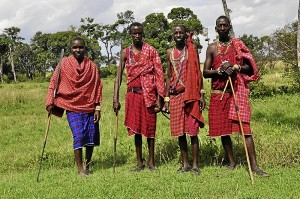
In the blink of an eye, it was all over. The predator, her mouth firmly locked on the bleeding neck of its prey, grew increasingly paranoid as a flock of vultures began circling overhead in a ritualistic dance of death.
“The law of the jungle,” Stanley said as I sat motionless at the edge of my seat. “Just another in day in the life of the Mara. Shall we head back to Elephant Pepper Camp? Tomorrow, we go hunt for some lions.”
In this wild, primitive corner of the world, nature—and not much else—puts on the greatest show on earth.
WHEN TO GO: The best time to view Kenya’s wildlife is during the dry seasons from January to March and from June to October (wildebeest migration season in the Maasai Mara).
HOW TO GET THERE: Asia to Africa Safaris (3/F, Lapanday Center, 2263 Pasong Tamo Ext., Makati; tel. 8122728; www.atoasafaris.com) specializes in organizing tailor-made safaris to Africa from the Philippines.
WHAT YOU SHOULD KNOW: Philippine passport holders can obtain a 90-day Kenya tourist visa ($50) upon arrival at Jomo Kenyatta International Airport.

